A Parade of Traditional Culture at Beijing Winter Olympics
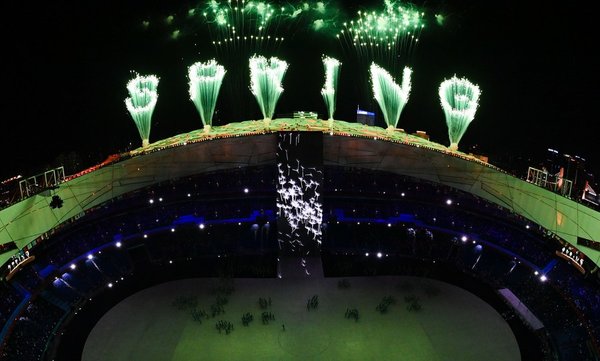 |
| Fireworks illuminate the night sky during the opening ceremony of the Beijing 2022 Olympic Winter Games at the National Stadium in Beijing, capital of China, Feb. 4, 2022. [Xinhua/Song Yanhua] |
BEIJING, Feb. 8 (Xinhua) — Chinese people believe that the achievements of the year ahead depend on a good start in spring. It is a pleasant coincidence that the Beijing 2022 Winter Olympics opened on the day of "Li Chun," or the Beginning of Spring, the first solar term on the Chinese Lunar Calendar.
Starting from the opening ceremony, elements inspired by traditional Chinese culture have become prevalent, both inside and outside of the venues of the Beijing Winter Olympics.
During the countdown to the ceremony, the names of the 24 solar terms were presented one by one on big screens. Fireworks formed the two Chinese characters Li Chun, meaning "Beginning of Spring" and the English word "spring."
The 24 solar terms embody the ancient Chinese wisdom of observing nature, represent a picturesque landscape as the seasons of spring, summer, autumn and winter change, and reflect Chinese people's outlook on life and cosmology.
"Every minute of the opening ceremony was full of Chinese culture," said Zhang Yimou, chief director of the ceremony, adding that the overall creativity reflects the values and philosophies of the Chinese people.
Beginning from a pre-show featuring "Chinese Square Dance," which was originally created by ordinary Chinese people, Chinese elements were presented throughout the whole ceremony.
Honored guests entered the National Stadium, or the Bird's Nest, to the music of "Peace — A Community of Shared Future." Three Chinese characters, "Guo Nian Hao," and its English version "Happy Chinese New Year" appeared on the glowing "ice" at the center of the LED floor, expressing New Year greetings from the Chinese people to friends from around the world.
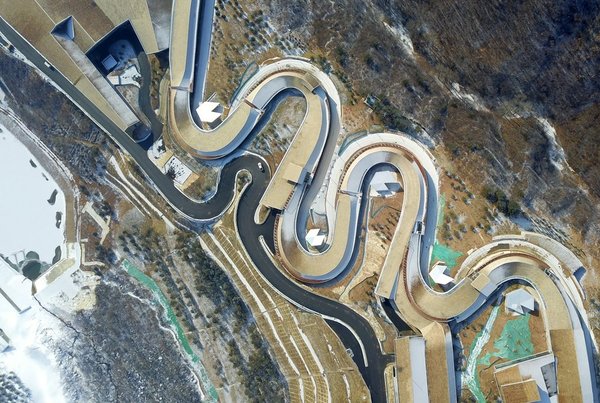 |
| Aerial photo taken on Jan. 19, 2021 shows the National Sliding Center, also called "Snow Dragon," in Yanqing District, Beijing, capital of China. [Xinhua/Zhang Chenlin] |
The Winter Games take place as Chinese people celebrate their traditional Spring Festival, the most important occasion for family gatherings.
"The opening ceremony is about sharing beautiful moments with everyone and spreading more common ideals of humanity," Zhang said.
The athletic teams were led by placard bearers dressed in costumes with ice and snow patterns. The placards, in the shape of a glowing snowflake, were inspired by the "Chinese knot," which is an ancient Chinese craft of hand knitting, symbolizing solidarity and prosperity.
The teams entered in the stroke order of their team names as written in the Chinese characters, with Turkey being first to follow Greece. Athletes walked past the "China Gate" inlaid with traditional Chinese patterns used on windows and doors, and onto the "China Window" with changing pictures of magnificent scenery and landscapes in China.
The moment when the 24th Olympic Winter Games was declared open, a thundering canopy of fireworks in the shape of the "Guest-Greeting Pine" appeared above the Bird's Nest. The "Guest-Greeting Pine" is the symbolic landscape of Huangshan Mountain, a world heritage site in east China's Anhui Province, and has become a symbol of peace and friendship between China and people all over the world.
 |
| Fireworks in the shape of the "Guest-Greeting Pine" illuminate the night sky during the opening ceremony of the Beijing 2022 Olympic Winter Games at the National Stadium in Beijing, capital of China, Feb. 4, 2022. [Xinhua/Xu Zijian] |
China-themed mascots also made an appearance, especially "Bing Dwen Dwen," a panda in an icy coat likened to a popular local snack sugar-coated haws, which has become the country's most-sought-after mascot.
With the Beijing 2022 emblem reflecting China's calligraphy and seal-carving arts seen everywhere in the city, the Olympic village has also been decorated with traditional Chinese paintings. Olympic medals with inspiration from ancient jade-ware and traditional Chinese patterns have become an instant Internet hit as medalists began to post their spoils on social media.
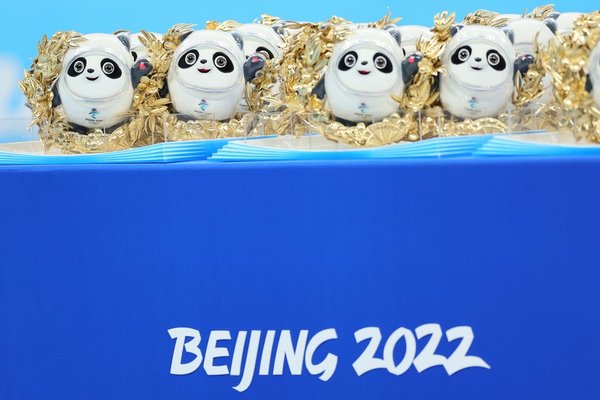 |
| Photo taken on Feb. 7, 2022 shows the mascots of Beijing 2022 Olympic Winter Games Bing Dwen Dwen to be awarded to the winning athletes of the figure skating team event during the flower ceremony at Capital Indoor Stadium in Beijing, capital of China. [Xinhua/Lan Hongguang] |
The design of the competition venues also reflects some of China's traditional wisdom. The Big Air Shougang, a venue designed for big-air events, has been affectionately named "Snowy Flying Apsaras." The apsaras is a typical dancing image on murals from Dunhuang's Mogao Grottoes in northwest China's Gansu Province.
The National Sliding Center is called "Snow Dragon," as the track is like a winding dragon perched on top of the mountain. The National Ski Jumping Center was given the nickname "Snow Ruyi," as it has an "S-type" curve that resembles the shape of "Ruyi," a traditional Chinese ornamental object for luck.
(Source: Xinhua)
Please understand that womenofchina.cn,a non-profit, information-communication website, cannot reach every writer before using articles and images. For copyright issues, please contact us by emailing: website@womenofchina.cn. The articles published and opinions expressed on this website represent the opinions of writers and are not necessarily shared by womenofchina.cn.


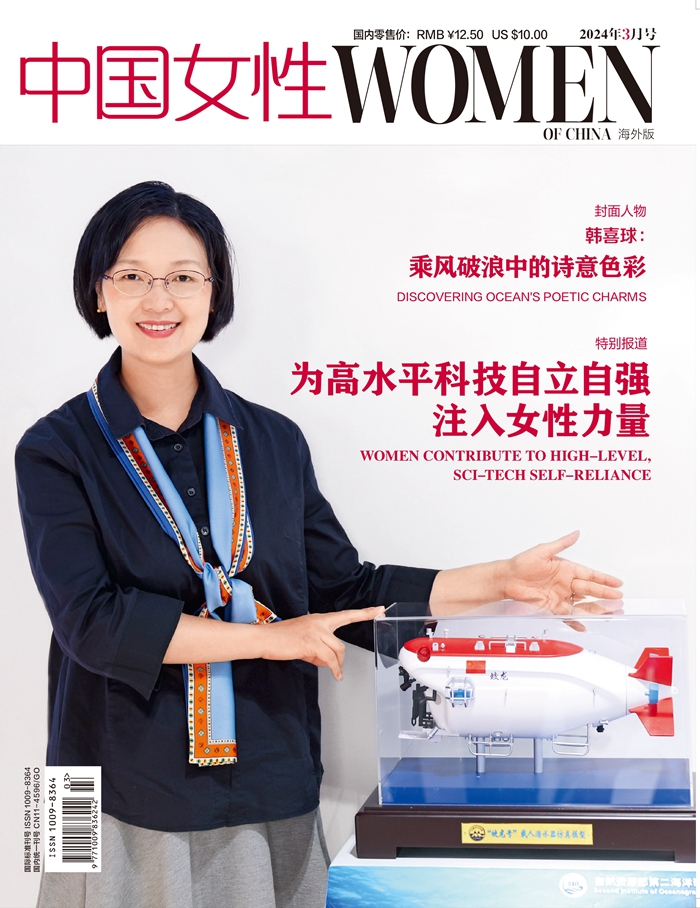

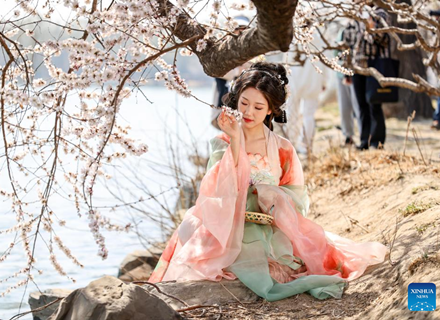
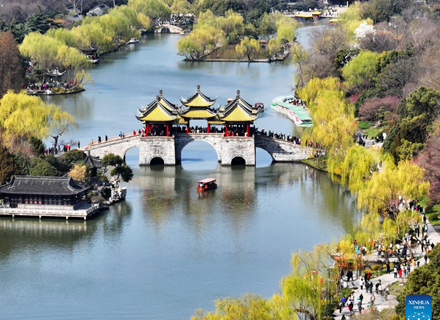


 WeChat
WeChat Weibo
Weibo 京公网安备 11010102004314号
京公网安备 11010102004314号